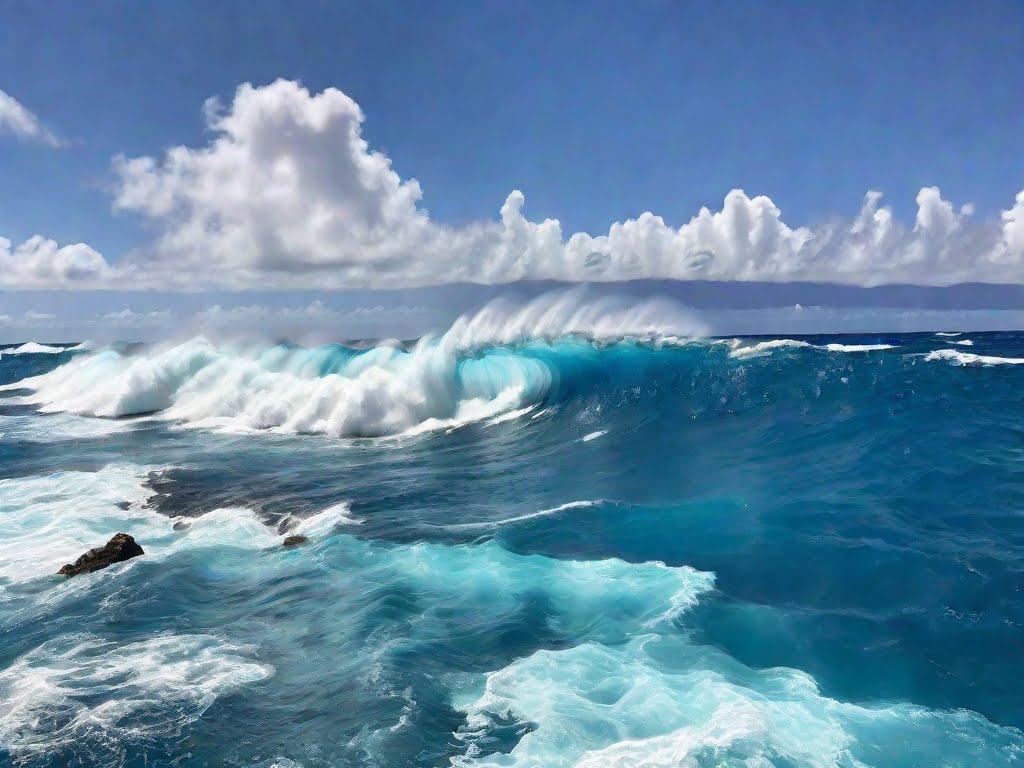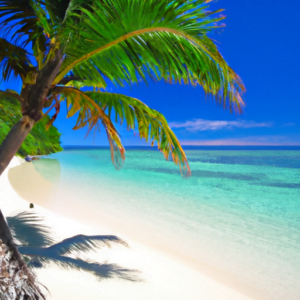Are you planning a trip to the beautiful islands of Hawaii? As you prepare for your adventure in paradise, it is essential to prioritize your safety and well-being. This article, “Safety Tips for Hawaii’s Ocean,” aims to provide you with valuable advice on ocean safety, sun protection, and hiking precautions to ensure that you have a memorable and worry-free experience exploring Hawaii’s diverse landscapes. With these tips in mind, you can fully immerse yourself in the incredible beauty and vibrant culture of the Hawaiian islands while staying safe and protected.
Table of Contents
ToggleSafety Tips for Hawaii’s Ocean
Understanding Hawaii’s Ocean
Hawaii’s ocean is known for its breathtaking beauty and incredible diversity. It is essential to have a solid understanding of the ocean before venturing into its waters. One aspect to consider is the types of waves you may encounter. Hawaii is famous for its world-class surf breaks, and depending on your skill level, you may want to choose beaches with milder waves for a safer experience.
Ocean currents are another crucial factor to be aware of. The Hawaiian Islands are surrounded by different currents, such as the North Pacific Gyre and Equatorial Countercurrent. Understanding the flow of these currents can help you stay safe while swimming or engaging in water activities.
Tides and rip currents are common along Hawaii’s coastlines. It is crucial to understand how these natural phenomena work. Tides can greatly affect the water’s depth and current speed, while rip currents can swiftly pull swimmers away from the shore. Being educated about tides and rip currents will allow you to make informed decisions and avoid potential dangers.
Lastly, Hawaii is home to an incredible variety of marine life. From colorful tropical fish to majestic sea turtles and even the occasional dolphin or whale sighting, the ocean is teeming with fascinating creatures. Being familiar with the marine life in Hawaii will enhance your experience and promote responsible interactions.
Before Entering the Water
It is essential to take some precautions before entering the water to ensure your safety and enjoyment.
Always check the weather conditions before heading to the beach. Hawaii’s weather can change rapidly, and it is important to be prepared for any potential storms or high winds that could make swimming unsafe.
Observe warning signs posted at beaches, as they provide valuable information about potential hazards or swimming restrictions. These signs are placed for your safety, so it is essential to heed their warnings.
Assessing your swimming skills is crucial. Be honest with yourself about your abilities and choose beaches that align with your experience level. If you are a beginner or unsure of your swimming skills, opt for beaches with lifeguards and calmer conditions.
Wearing appropriate swimwear is not only a matter of comfort but also safety. Make sure your swimwear fits properly and allows for easy movement. Additionally, consider wearing a rash guard or wetsuit for added protection against the sun, jellyfish, and other potential irritants.
Lastly, do not forget to apply sunscreen before entering the water. Hawaii’s sun can be intense, and protecting your skin from harmful UV rays is vital. Choose a broad-spectrum sunscreen with a high SPF and reapply it regularly to ensure continuous protection.
Swimming Safety
When it comes to swimming in Hawaii, following safety guidelines is paramount.
Swim at beaches with lifeguards whenever possible. These trained professionals can provide assistance if needed and offer important information about current conditions.
Knowing your limits is essential. It is okay to enjoy the water and have fun, but always be mindful of your own abilities. Swim within your comfort zone and avoid going too far from the shore if you are not a strong swimmer.
Never swim alone. Having a buddy nearby can provide extra safety and support. If you encounter any difficulties, having someone with you can make a significant difference in your overall safety.
Be aware of shorebreaks, which are large waves that break directly onto the shore. These powerful waves can cause injuries if you are caught in their impact zone. Pay attention to warning signs and consider observing shorebreaks from a safe distance.
Avoid swimming near river mouths or after rain. Heavy rainfall can lead to increased runoff, which potentially carries pollutants or dangerous debris into the ocean. Additionally, strong outgoing currents may be present near river mouths, making swimming hazardous.
Dealing with Ocean Hazards
While Hawaii’s ocean offers countless opportunities for adventure, it is essential to be prepared for potential hazards.
Recognizing and escaping rip currents is crucial. If you find yourself caught in a rip current, remember to stay calm and swim parallel to the shore until you are out of the current’s pull. Then, swim back to the shore at an angle. Never try to swim against the current, as it can exhaust you quickly.
Coping with undertows, which are powerful currents that flow beneath the surface, requires caution. If you feel yourself being pulled underwater or away from the shore, avoid panic and swim parallel to the shore until you are out of the undertow’s grip.
Be cautious of high surf conditions. Hawaii is known for its big waves, and while they may be enticing to experienced surfers, they can be dangerous for inexperienced swimmers. Pay attention to surf reports and choose the appropriate beaches for your skill level.
Avoid coral reefs and sharp rocks while swimming or snorkeling. Touching or standing on coral can cause irreversible damage to these fragile ecosystems. Additionally, sharp rocks can pose a hazard if you are caught in a wave or swimming in shallow water.
Watch out for marine life encounters. While Hawaii’s marine life is awe-inspiring, it is important to maintain a respectful distance. If you encounter sea turtles, dolphins, or other wildlife, admire them from a distance and do not attempt to touch or feed them. Respect their natural habitat and observe from a safe distance.
Snorkeling and Scuba Diving Safety
Snorkeling and scuba diving allow you to explore the captivating world beneath the surface. To ensure your safety and make the most of your experience, consider the following tips.
Get proper instruction and certification. Snorkeling and scuba diving involve specific techniques and safety protocols. Enrolling in a certified course will teach you essential skills and ensure you are well-prepared.
Always dive with a buddy. Having a dive buddy is crucial for safety. They can provide assistance if needed, share the joy of the experience, and act as a backup in case of emergencies.
Check equipment and conditions before diving. Inspect your gear to ensure it is functioning correctly and properly fitted. Additionally, assess the current conditions, such as visibility and water temperature, to determine if it is suitable for diving.
Know the signs of decompression sickness, also known as “the bends.” Rapid ascents and descents can lead to nitrogen bubbles forming in your body, causing this potentially life-threatening condition. Learn about the symptoms and take necessary precautions to mitigate the risk.
Be aware of your surroundings and potential hazards. When snorkeling or diving, stay vigilant about your location, underwater structures, and marine life. Avoid touching or damaging coral reefs and always maintain a safe distance from any wildlife.
Boating and Watercraft Safety
Exploring Hawaii’s ocean on a boat or other watercraft can be an exhilarating experience. To ensure your safety while enjoying this adventure, follow these guidelines.
Follow all safety guidelines and regulations provided by the boat rental company or captain. These guidelines are in place to protect you and others on board, so it is essential to adhere to them.
Wear life jackets at all times while on a boat or any watercraft. Life jackets can save lives in the event of an accident or if you find yourself in the water unexpectedly.
Be cautious of boat traffic and other vessels in the area. Stay aware of your surroundings and follow the proper navigation rules to avoid collisions.
Keep a safe distance from marine animals. While it can be tempting to approach and interact with dolphins, whales, or other marine life, it is crucial to maintain a respectful distance. Preserve their natural habitat and observe them from afar.
Be prepared for emergencies. Familiarize yourself with the boat’s safety equipment, such as life rafts, flares, and emergency communication devices. Additionally, have a basic understanding of first aid procedures and be prepared to respond swiftly in case of an emergency.
Surfing and Bodyboarding Safety
Surfing and bodyboarding are popular water sports in Hawaii. To enjoy the thrill of catching a wave while staying safe, consider the following safety tips.
Take surf lessons if you are a beginner. Proper instruction is instrumental in learning how to read the waves, paddle effectively, and navigate the lineup. Experienced instructors can also teach you about surf etiquette and ocean safety.
Choose appropriate surf spots according to your skill level. Hawaii offers a wide range of breaks suitable for beginners, intermediate, and advanced surfers. Opt for beaches with manageable waves that match your abilities.
Know and abide by surf etiquette. Respect the lineup, take turns, and communicate with other surfers to ensure a harmonious and safe experience for everyone in the water.
Use a leash and protective gear. Attaching a leash to your surfboard or bodyboard helps keep it within reach if you fall off. Additionally, consider wearing appropriate protective gear, such as a helmet or wetsuit, depending on the conditions and your comfort level.
Be mindful of other surfers. Avoid cutting in front of someone riding a wave and be aware of your surroundings to avoid collisions. Surfing is a communal activity, and respect for others’ safety is essential.
Kayaking and Stand-Up Paddleboarding Safety
Kayaking and stand-up paddleboarding allow you to explore Hawaii’s ocean at your own pace. To enjoy these activities safely, remember these safety tips.
Wear a personal flotation device (PFD) at all times while kayaking or stand-up paddleboarding. A PFD can provide essential buoyancy and potentially save your life in case of an accident or if you become fatigued.
Check weather and water conditions before heading out. Strong winds, currents, or rough waters can make kayaking or stand-up paddleboarding challenging and potentially dangerous. Choose calm, protected areas for a safer experience.
Learn and practice proper paddling techniques. Efficient paddling techniques will help you navigate the water more effectively and conserve energy. It is also essential to be familiar with rescue techniques in case you or someone else requires assistance.
Stay clear of restricted areas. Some areas, such as marine reserves or fragile ecosystems, may have restrictions on kayaking or stand-up paddleboarding. Respect these guidelines to protect the environment and maintain the safety of all involved.
Practice self-rescue skills. In case you fall off your kayak or stand-up paddleboard, it is important to know how to safely reenter the craft or swim to shore. Familiarize yourself with self-rescue techniques and be prepared for unexpected situations.
Fishing Safety
If you plan to go fishing in Hawaii’s ocean, keep these safety tips in mind to ensure a successful and safe outing.
Get a fishing license. Fishing regulations in Hawaii require a valid fishing license for individuals aged 15 and older. Abide by these regulations to preserve the marine ecosystem and ensure sustainable fishing practices.
Watch out for slippery rocks when fishing from the shoreline. Rocks near the water can be slippery, especially when wet or covered in algae. Take caution to avoid falls or injuries.
Be cautious of strong currents when fishing from rocks or cliffs. Waves and currents can be unpredictable and powerful, posing a risk of getting swept away. Stay vigilant and avoid jeopardizing your safety.
Handle fish with care. When catching fish, hold them properly to avoid injury to yourself or harm to the fish. Additionally, be aware of any fishing restrictions or protected species to ensure responsible fishing practices.
Avoid overexposure to the sun. While fishing, you may spend extended periods exposed to the sun. Protect yourself by wearing a hat, sunglasses, and long sleeves, and regularly apply sunscreen to prevent sunburns and long-term skin damage.
Beach and Shore Safety
Even when you are not in the water, it is essential to prioritize your safety on the beach and shore.
Be mindful of beach erosion. Hawaii’s shorelines can experience erosion, leading to unstable cliffs or steep drop-offs. Avoid walking too close to the edge and stay away from areas with visible signs of erosion.
Do not turn your back to the ocean. Always face the ocean and be aware of your surroundings. Waves can be unpredictable and may unexpectedly reach higher on the beach, potentially causing injuries or sweeping you off balance.
Stay hydrated, especially on hot and sunny days. Bring water with you and make sure to drink regularly to prevent dehydration. Hawaii’s tropical climate can be deceiving, and it is easy to get overheated without proper hydration.
Bring snacks and necessary supplies. When spending a day at the beach, ensure you have enough food, water, and any other essentials you may need. This preparation will help you stay comfortable and avoid potential emergencies.
Protect yourself from sunburns. Apply sunscreen regularly and seek shade during the hottest hours of the day. Wearing a hat, sunglasses, and lightweight but protective clothing can also help minimize sun exposure.
As you venture into Hawaii’s ocean, remember that safety is essential for a memorable and enjoyable experience. By understanding the ocean’s dynamics, being aware of potential hazards, and following safety guidelines, you can fully appreciate the wonders of Hawaii’s ocean while prioritizing your well-being.





